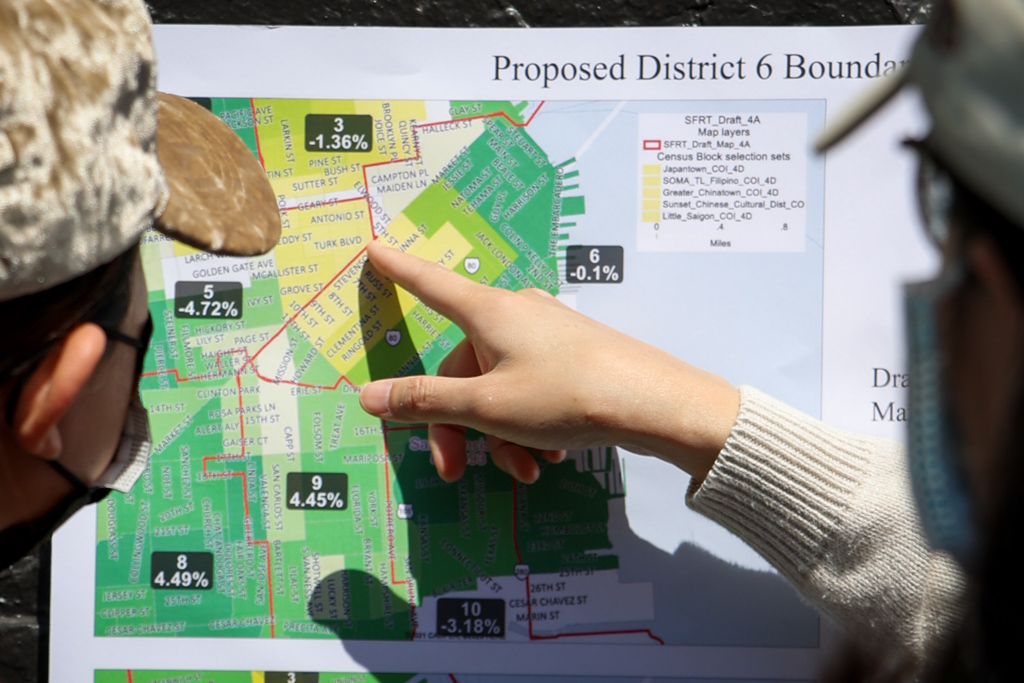A report unpacking California’s redistricting cycle this week detailed “widespread violations” in how cities and counties across the state draw maps and urged strengthening independent, transparent commissions to create future political maps.
A coalition of civic watchdogs found that numerous jurisdictions used gerrymandering specifically to preserve entrenched political power and sideline community input.
In the case of San Francisco, the groups criticized the Redistricting Commission’s structure: Its nine members are evenly appointed by the mayor, the Board of Supervisors and the city’s Election Commission. In 2020, California had 22 independent redistricting commissions, 18 of which have members not directly appointed by elected officials.
This lack of political independence was a major factor in 2022’s drawn-out process, which saw all-night meetings and accusations that the final map was anything but neutral. Urgent reform is needed before the 2030 cycle, the report said.
“Its controversial redistricting in 2022 illustrates the risks and potential conflicts of interest associated with this model,” the report read. “As San Francisco and numerous directly appointed advisory commissions demonstrated this cycle, directly appointed commissioners often act as proxies for their appointing officials, undermining the benefits of [Independent Redistricting Commissions] and harming public trust in the redistricting process.”
Civic groups Common Cause California, the Asian Law Caucus, the ACLU’s Northern and Southern California chapters and the League of Women Voters of California conducted the analysis and wrote the subsequent recommendations.
Population growth in San Francisco during the 2010s was concentrated in a handful of neighborhoods, forcing the Redistricting Commission to produce a very different map of the city’s 11 supervisor districts based on the decennial census count.
The process went anything but smoothly. During one meeting in April, four members walked out after publicly accusing fellow members of “selling out” in a “sham” process. A vote was also reversed to approve controversial changes after a sudden recess to move cars for street cleaning.
Later, a task force member alleged, with texts reported by Mission Local, that the mayoral appointee chair felt pressure to adopt a controversial map that would disadvantage Supervisor Shamann Walton for reelection. The chair had allegedly mentioned that Mayor London Breed, a moderate, and Walton, a progressive representing a Black stronghold, do not get along.
In its final task force report, which all members provided input for, urged measures to protect redistricting volunteers from “inappropriate political influence” and to consider a system clear of any involvement from elected officials.
This week’s report concurred. The coalition recommends prohibiting the drawing of lines to favor or disadvantage incumbents, require independent commissions for larger jurisdictions that bars the direct appointment of elected officials, and increase the number of public hearings for draft maps—all issues San Francisco’s redistricting process wrestled with last year.
The group also recommended requiring in-person and remote public comment options and applying the law to all local governments like school and community college districts.
